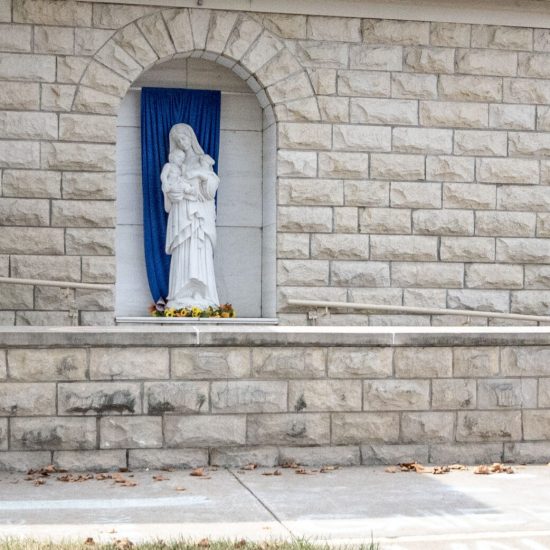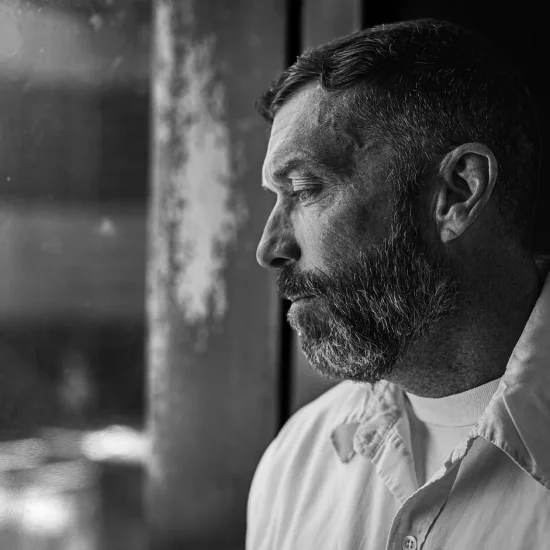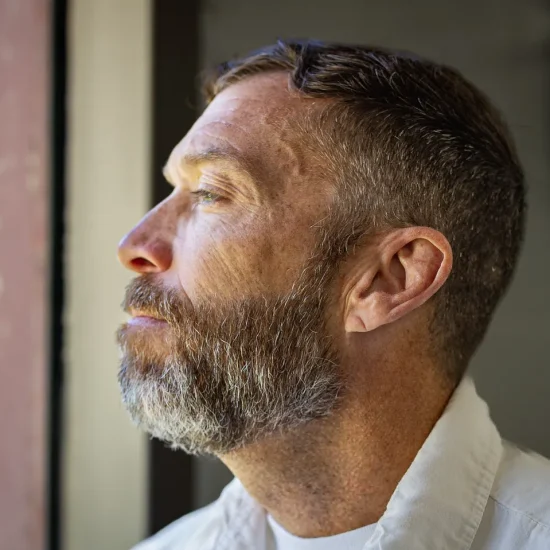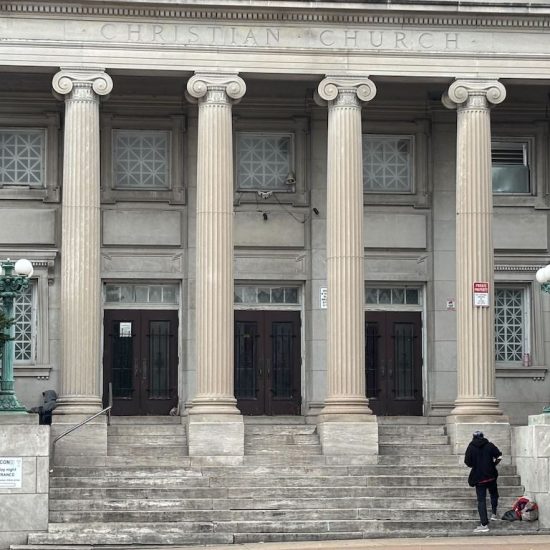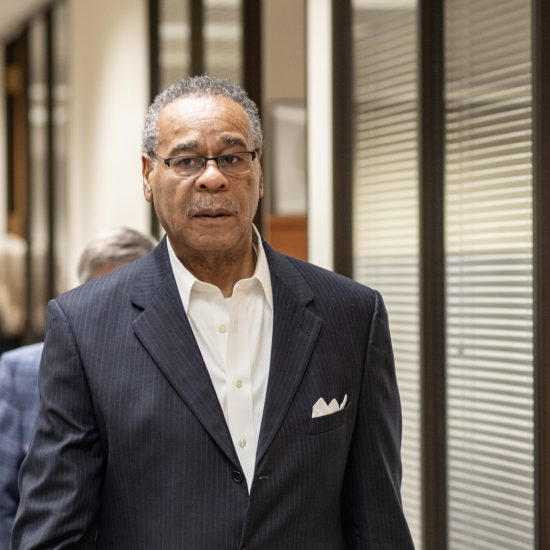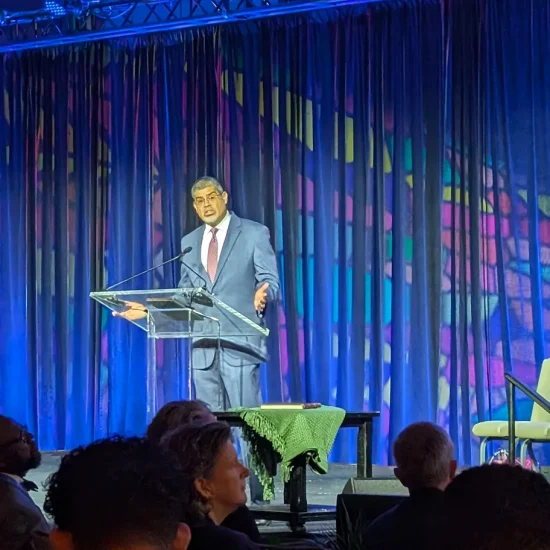Acceptance of members of the Church of Jesus Christ of Latter-day Saints in Missouri has come almost full circle since they first tried to settle in the state in the 1830s.
Called Mormons, church members migrated to Jackson County in June 1831, with founder Joseph Smith leading one of three groups from Ohio. At first, the newcomers were accepted as industrious and hard-working.
But as their numbers began to climb, established settlers began to resist them. A new temple erected earlier this year in Clay County and formally dedicated on May 6 symbolizes "a time of healing," Missouri Gov. Jay Nixon said, and a new era of acceptance.
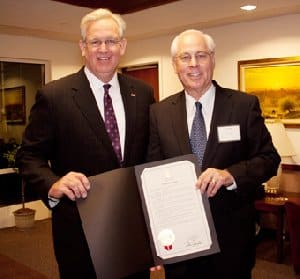
Missouri Governor Jay Nixon, left, presents an official proclamation to Church leader Elder William R. Walker following a tour of the newly completed Kansas City Missouri Temple. The proclamation acknowledges the contributions of members of The Church of Jesus Christ of Latter-day Saints in Missouri.
|
Mormons chose Jackson County as a "direct revelation," according to The Encyclopedia of Mormonism. God revealed to Smith that Zion and the New Jerusalem would be located there.
"The place which is now called Independence is the center place; and the spot for the temple is lying westward, upon a lot which is not far from the court-house," notes the Book of Doctrine and Covenants, one of the Latter-day Saint scriptures.
By the fall of 1832, the newcomers had started schools in Kaw Township and in Independence. Earlier that year, they also started a religious monthly, the Independence Evening & Morning Star, and a secular weekly, The Upper Missouri Advertiser.
By early 1833, some resistance was beginning to build in Jackson County, and by July that year, the resistance turned violent. A mob destroyed a printing press, scattered the compilation of Smith's revelations the Mormons were trying to create, and tarred and feathered a bishop.
Although church leaders agreed to move the flock out of Jackson County, they didn't do so right away. The violence continued until the county militia disarmed the Mormon community and pushed its members out by November. Most church members moved to Clay County.
Latter-day Saints also had moved into Ray and Caldwell counties by 1836. Ray County residents opposed them, and eventually a six-mile buffer zone was created between the two counties. The Mormons established the town of Far West on Shoal Creek.
Little appears in the media of that time about the specific attitudes of other religious settlers. Jacob Lanius, an itinerant preacher for the Missouri Conference of the Methodist Episcopal Church described in his journal how the Mormons had proselytized all but one of a class of Methodists at South Fork on the Salt River. They were "very good" at proselytizing, he said.
In an attempt to "solve the Mormon problem," Alexander W. Doniphan, a state legislator and "a friend to the Saints," introduced a bill to designate Caldwell and Daviess counties for the Mormons. Signed into law on Dec. 29, 1836, it allowed the Latter-day Saints to establish a militia as other counties had and to have representation in the legislature.
As Mormons began moving into Carroll County in the spring of 1838, some dissenters rose among their ranks. Then a militia officer, Sampson Avard, formed a group of vigilantes. He convinced volunteers that leaders had approved and authorized vengeance on the church's enemies.
Leader and church spokesman Sydney Rigdon gave a fiery speech that July in which he "warned of a war of extermination between Mormons and their enemies if they were further threatened or harassed," Leland Gentry noted in the encyclopedia.
Settlers became more upset as Mormons increased their presence in Carroll County because the established residents thought the Latter-day Saints had agreed to stay in the designated counties.
Church leaders argued that as Americans, they had the right to live wherever they chose. Both sides started mobilizing their militias.
Then Gov. Lilburn W. Boggs added fuel to the already heated situation in Missouri when he issued Executive Order #44, commonly known as the Mormon Extermination Order, on Oct. 27, 1838, triggering more violence.
Joseph Smith and others were arrested, and the Mormons were forced to leave the state. Smith and other leaders were held in Liberty through the winter.
In its Nov. 23, 1838, issue, the Religious Herald, the news journal for Baptists in Virginia, reported how the conflict had "resorted to arms." At first, the Mormons were "successful," but the Missouri government forced them out, the newspaper noted. "It is, therefore, to be hoped that these disgraceful things are now ended."
Mormons returned to Kansas in 1895 and set up the church's Central States Mission in St. John. The regional office was moved to Kansas City in 1900 and then to Independence in 1907.
Gov. Boggs' executive order was finally rescinded in 1976 when then-Gov. Kit Bond officially did so.
But what many members believe is the site of New Jerusalem, a 2.5-acre lot on South River Boulevard in Independence, currently is owned by the Church of Christ.
The Reorganized Church of Jesus Christ of Latter-day Saints, now called Community of Christ, is based in Independence, with 250,000 members. Its auditorium, built in 1926, and its temple, constructed in 1994, sit near the lot many say Smith dedicated in 1831.
The new Latter-day Saints temple sits on Searcy Creek Parkway near I-435 in Clay County, just a few miles from Liberty. Both Gov. Nixon and Kansas Gov. Sam Brownback issued proclamations to mark its completion and to affirm Mormon contributions to both states.

